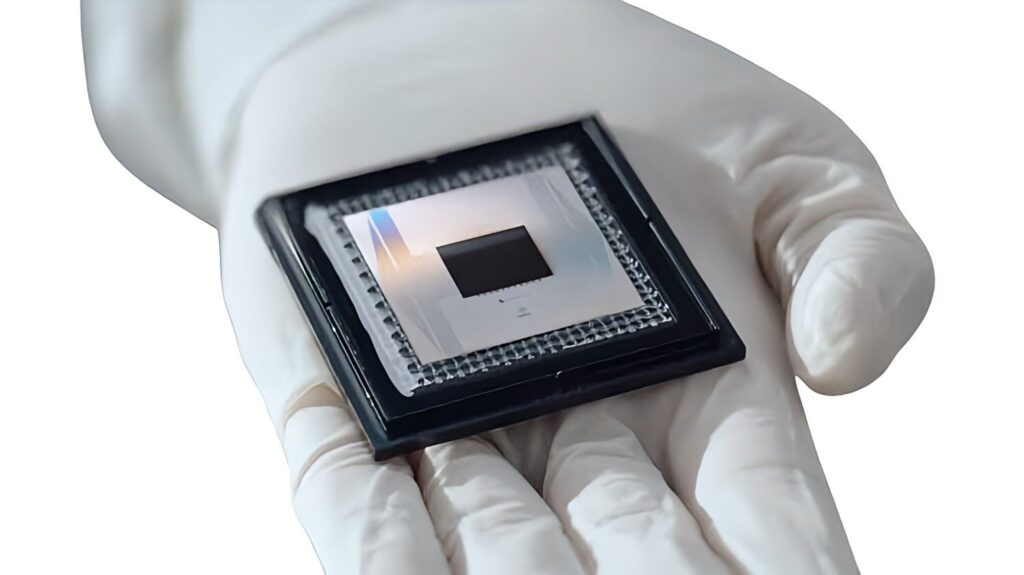Google is making waves in the tech world with its newly unveiled quantum chip, Google’s Willow Chip, marking a potential paradigm shift in computing. This innovation is being hailed as a significant step forward in the quest to harness the power of quantum mechanics, promising unprecedented speed and efficiency that could surpass even the most advanced supercomputers. This article delves into the details of this groundbreaking technology, its potential applications, and the challenges that lie ahead.
What Is Quantum Computing?
At its core, Google’s Willow Chip is an attempt to move beyond the limitations of classical computing by harnessing quantum mechanics. Traditional computers process information using bits, which can represent either a 0 or a 1. Quantum computers, however, utilize qubits (or quantum bits), which, thanks to the principle of superposition, can exist in multiple states simultaneously. This capability allows quantum computers to perform many calculations concurrently, drastically accelerating problem-solving capabilities for certain types of complex tasks.
- Superposition: Qubits can exist in multiple states simultaneously. This allows quantum computers to process vast amounts of data concurrently.
- Entanglement: When qubits are entangled, the state of one qubit is directly related to the state of another, even if they are far apart. This enhances computational efficiency.
These principles enable quantum computers to perform calculations at speeds unattainable by traditional systems, especially for complex problems involving vast data sets or intricate models.
Willow: A Leap Forward in Quantum Computing
Google’s Willow Chip is described as a significant leap forward in practical quantum computing. It incorporates breakthroughs in several critical areas, including:
- Enhanced Qubit Stability: Qubits are notoriously sensitive to environmental factors, which can lead to errors. The Willow chip incorporates advanced techniques to stabilize qubits, making computations more reliable.
- Error Correction: One of the biggest hurdles in quantum computing is minimizing errors as the number of qubits increases. Google has achieved a breakthrough by reducing error rates across the system, a critical step toward scalability.
- Advanced Quantum Gate Operations: The chip improves the precision and speed of quantum gate operations, allowing for more complex computations.
These advancements not only enhance the chip’s performance but also lay the groundwork for developing large-scale quantum computers capable of addressing real-world challenges.
Unmatched Computational Power
To illustrate the power of Google’s Willow Chip, the company claims it can solve a complex problem in just five minutes. The fastest supercomputers currently available would take an unfathomable 10 septillion years to complete the same task. This demonstrates the potential of quantum computing to revolutionize industries and solve some of humanity’s most challenging problems:
- Simulating Chemical Reactions: Quantum computers can model molecular interactions with unparalleled accuracy, paving the way for breakthroughs in materials science and pharmaceuticals.
- Optimizing Complex Systems: From logistics to telecommunications, quantum algorithms can optimize processes, reducing costs and increasing efficiency.
Potential Applications Across Industries
The Willow chip’s capabilities extend far beyond academic research, with transformative applications in multiple fields:
- Pharmaceutical Development: Quantum simulations can accelerate drug discovery by modeling molecular interactions at a quantum level. This could lead to faster development of treatments for diseases like cancer and Alzheimer’s.
- Energy Sector: Quantum computing can optimize renewable energy grids, enhance nuclear fusion reactor designs, and improve battery technologies for electric vehicles.
- Logistics and Supply Chains: Quantum algorithms can solve intricate routing problems, ensuring more efficient distribution of goods and resources.
- Cryptography and Cybersecurity: While quantum computing poses a threat to current encryption methods, it also offers the potential for developing quantum-resistant security protocols.
- Climate Modeling: Quantum computers can analyze climate data with greater precision, helping researchers develop more accurate models and mitigation strategies.
Challenges on the Road to Quantum Supremacy
Despite its potential, the Willow chip is still in the experimental phase. Several challenges must be overcome before quantum computing becomes a practical tool:
- Scalability: Building quantum computers with thousands or millions of qubits while maintaining stability and coherence is a significant engineering challenge.
- Error Rates: While Willow has made progress in error correction, the technology still needs to achieve near-perfect accuracy for real-world applications.
- Cost and Complexity: Quantum computers require highly specialized and expensive hardware, such as cryogenic systems, to operate.
These hurdles mean that commercially viable quantum computers are unlikely to emerge until the end of the decade, requiring sustained investment and innovation.
Global Efforts in Quantum Computing
Governments and private organizations worldwide are racing to advance quantum computing. Notable initiatives include:
- The National Quantum Computing Centre (NQCC) in the UK: This facility aims to position the UK as a leader in quantum research and development.
- Private Sector Investments: Companies like IBM, Microsoft, and Amazon are actively exploring quantum technologies, contributing to a rapidly growing ecosystem.
Collaboration between academia, industry, and government is essential to accelerate progress and ensure that quantum computing benefits society as a whole.
Balancing Innovation and Security
The rise of quantum computing poses a dual challenge: harnessing its potential while addressing its risks. One major concern is the impact on cybersecurity. Quantum computers could break current encryption methods, leaving sensitive data vulnerable. To counter this, organizations are developing quantum-resistant cryptographic techniques, ensuring that security evolves alongside technological advancements.
The Future of Quantum Computing

Google’s Willow chip is a remarkable milestone in the journey toward practical quantum computing. While challenges remain, the progress made thus far is promising. As the technology matures, it has the potential to revolutionize industries, solve humanity’s most pressing problems, and reshape our understanding of the digital world.
Quantum computing is no longer just a theoretical concept—it is a rapidly approaching reality. The Willow chip serves as a testament to human ingenuity and a glimpse into the future of computation.
The unveiling of Google’s Willow chip signifies a quantum leap in computational technology. By addressing challenges like qubit stability and error correction, Willow brings us closer to a future where quantum computers transform industries ranging from healthcare to energy. However, the journey is far from over. As researchers and engineers continue to innovate, the promise of quantum computing grows ever brighter, offering solutions to challenges once thought unsolvable.With the Willow chip, Google has not only advanced the field of quantum computing but also ignited a new era of technological exploration.
For more information follow the Official Google’s blog.
